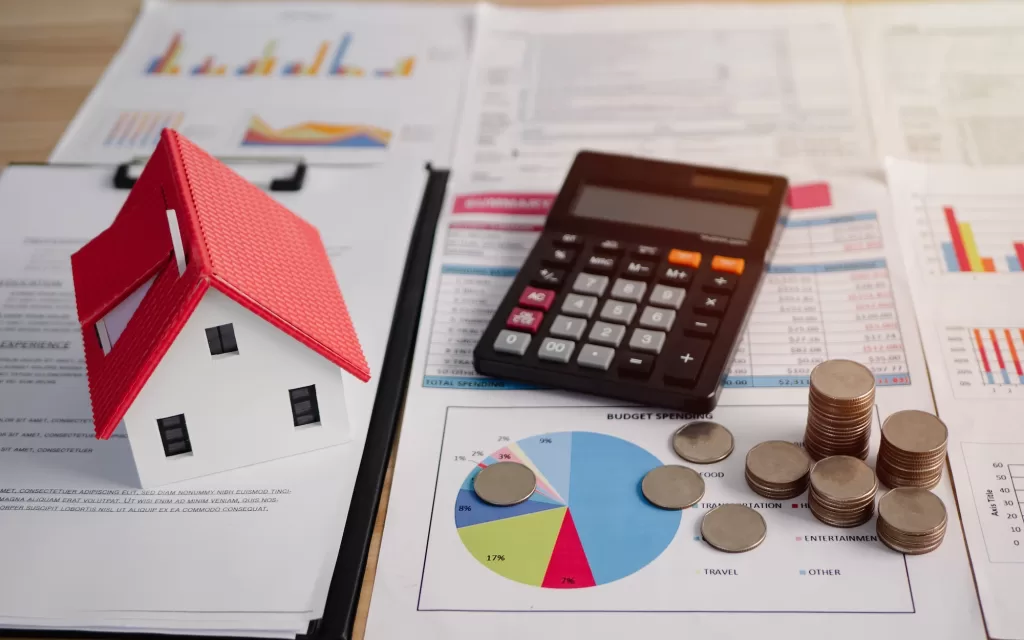Although interest rates remain high, market conditions like low inventory and sustained buyer interest and incentives like home buyer rebates have kept the market booming. In the real estate market of 2023, savvy investors with a little cash on hand are well situated to bring in healthy profits.

But smart real estate investment isn’t just about seeing an opportunity and pouncing on it. Savvy investors have a tax strategy planned out before they invest their first dollar. We’re not just talking about basic homeowner tax deductions – the following tips cover slightly more sophisticated tax strategies like 1031 exchanges, depreciation, and timing the market.
If you buy a home and flip it in less than a year, your profits will be taxed at your normal income tax rate, which can range up to a whopping 37%. But if you own it for longer than a year, your profits will be taxed as capital gains— likely at 15%, depending on your income. That’s probably quite a bit lower than your income tax rate, so it makes economic sense to hold onto that new property for over a year, even after you take carrying costs into account.
You don’t necessarily have to move into the house during that year, but it doesn’t need to sit vacant either. Consider putting it up for rent for a year. It’s always better to have your property bring in some revenue instead of passively racking up costs like property taxes and utilities.
There’s another tax-related reason not to flip properties too often, which we’ll cover in the next item.
If you sell more than one or two homes in a year, the IRS could classify you as a dealer instead of an investor, which will dramatically increase your tax liability.
Once you’re classified as a dealer, you’ll have to pay self-employment FICA taxes of just over 15%, in addition to your standard federal and state taxes. These taxes are typically split between employer and employee, but those who are self-employed have to pay both halves.
One way to avoid being classified as a dealer is to make sure you’re not selling multiple homes in a given tax year. Another way is to use the profits from your property sales for “investment intent.”
What this means is that you have to show the IRS that the profits from your property sales are going towards your investment projects, instead of into your pocket. That could be as simple as using those profits for purchasing or renovating another property. As long as your sales are a means (to enrich or advance other investments) and not an end (to use the profits as your primary income), you should be able to avoid being designated a dealer.
You could also buy and sell your properties through an S-corp or partnership LLC, which would change your tax classification entirely.
So let’s say you held onto your investment property for longer than a year, and are now selling it. Instead of full income taxes, you’ll only have to pay capital gains tax on the profits— but there are ways to reduce that number, too.
The simplest way to do that is to live in the place for two years. The tax code allows you to sell your primary residence (where you’ve lived for at least 24 of the previous 60 months) without paying capital gains tax on up to $250,000, or $500,000 if you’re a married couple filing jointly.
If you don’t want to live in your investment for two years, you can still defer capital gains tax — while not eliminating it entirely — by using a 1031 exchange.
A 1031 exchange allows you to take the profits from a property sale and reinvest them into a new property without paying capital gains tax. There are some restrictions with 1031 exchanges: your trade has to be handled with a third party company, and the sale and purchase has to take place within a certain timeframe. But your capital gains tax bill is fully deferred to whenever you sell that subsequent property.
The amazing thing about 1031 exchanges is that you can execute them multiple times. That is, you can sell one property and reinvest the profits, capital-gains-tax-free, into a second property. Then you can sell that second property and reinvest the profits into a third property — and on and on. Although the capital gains you owe on your profits follow you through all these deals, they only come due when you sell that last property. And by that time, your holdings will likely have grown to the point that that capital gains tax bill is now relatively puny.
There’s one last way to defer your capital gains taxes: investing your profits into a qualified opportunity zone fund gets you a deferral on your capital gains just like a 1031 exchange does. If there isn’t an opportunity zone near you, consider making an out-of-state investment.
On the other hand, who says you have to sell that property to free up some cash? If you’ve got equity built up, consider pulling some money out via a home equity loan, a home equity line of credit, or a cash-out refinance.
While you’ll have to pay interest on these loans, it’ll be far less than you’d pay if you sold and paid capital gains taxes.
According to the IRS, the lifespan of a residential property is 27.5 years, and owners are allowed to deduct a portion (1/27.5 or about 3.6%) of that property’s value every year. This is a very significant deduction: if you have a property worth $275,000, you’re allowed to take a depreciation deduction of $10,000 every year you own it.
Keep in mind, however, that when you sell the property, you’ll have to pay “depreciation recapture” taxes on the profits that went untaxed because of the depreciation you claimed.